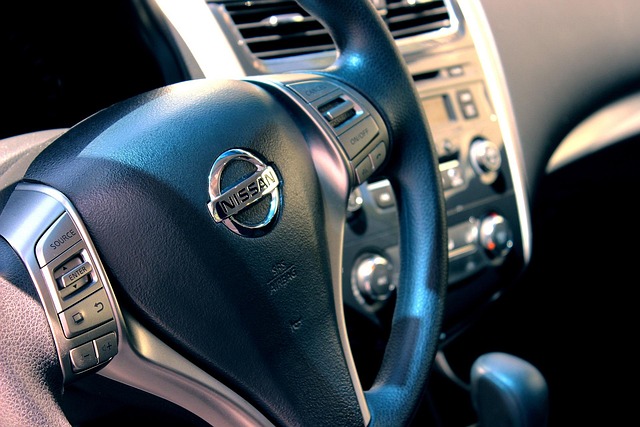Looking to register your car in California? This comprehensive guide walks you through the process, ensuring a smooth experience. From understanding vital requirements to gathering essential documents, this article is your go-to reference. Learn how to verify your Vehicle Identification Number (VIN) and complete the registration application efficiently. By following these steps, including tips on using a reliable DMV VIN verifier, you’ll be cruising California roads in no time.
- Understand California Car Registration Requirements
- Gather Necessary Documents for Car Registration
- Visit the DMV to Register Your Vehicle
- Verify Vehicle Identification Number (VIN)
- Complete and Submit the Registration Application
Understand California Car Registration Requirements

Before registering your car in California, it’s crucial to understand the state’s specific requirements. The California Department of Motor Vehicles (DMV) mandates several key steps for car registration, including a valid vehicle identification number (VIN) verifier. This ensures that your vehicle meets all safety and environmental standards before it can be legally registered and operated within the state.
One efficient way to meet this requirement is through mobile VIN verification or inspection services. These services allow you to transmit your VIN to a designated agency, which then cross-references it against their databases to confirm the vehicle’s history and condition. This digital process streamlines traditional methods, making car registration in California more accessible and faster, especially for out-of-state buyers looking to transfer ownership promptly.
Gather Necessary Documents for Car Registration

Before heading to the California DMV (Department of Motor Vehicles) for registration, ensure you have all the essential documents in order. The process requires specific paperwork to verify your vehicle’s ownership and identify its unique characteristics, a crucial step facilitated by tools like the DMV VIN verifier. Start by gathering your car’s title, which proves ownership, along with a valid driver’s license or state ID card. An important additional document is proof of insurance, as it’s required for registration and demonstrates compliance with state laws.
Don’t forget to bring along any previous registration documents, as they can simplify the process. For those who’ve recently purchased their vehicle, a bill of sale or purchase agreement might be needed. If you’re opting for a mobile VIN inspection or using a mobile VIN verifier, have your vehicle’s VIN (Vehicle Identification Number) readily available. This 17-character code is unique to each car and can speed up the registration process by providing immediate access to vital information.
Visit the DMV to Register Your Vehicle

To register your vehicle in California, a visit to the Department of Motor Vehicles (DMV) is an essential step. Bring along all necessary documents, including proof of ownership, identification, and any prior registration records. The DMV will verify your Vehicle Identification Number (VIN) as part of the registration process, ensuring that your car meets all safety and legal standards. This includes conducting a comprehensive VIN inspection to cross-check the vehicle’s history and ensure it complies with California’s regulations.
While you can typically complete this process in person, many Californians opt for convenient mobile vin inspection services. These mobile verifiers offer on-site or remote assistance, allowing you to register your car without leaving home. This modern approach streamlines the traditional DMV visit, making vehicle registration more efficient and accessible, especially for those with busy schedules.
Verify Vehicle Identification Number (VIN)

Before registering your car in California, it’s crucial to verify the Vehicle Identification Number (VIN). This unique 17-character code is essential for identifying your vehicle and ensuring its history is clear. You can perform a DMV VIN verifier inspection using official channels like the California DMV website or mobile vin verification apps. These tools allow you to cross-reference the VIN against state records, checking for any outstanding issues, accidents, or recalls.
A mobile vin verifier app offers a convenient way to complete this step, as it enables you to conduct a thorough vin inspection from the comfort of your home or on the go. By verifying the VIN early in the registration process, you can avoid potential delays or complications later, ensuring a smoother experience when registering your car with the California DMV.
Complete and Submit the Registration Application

To start the registration process, you’ll need to complete and submit the Registration Application form provided by the California Department of Motor Vehicles (DMV). This form requires essential information about your vehicle, including its make, model, year, and unique Vehicle Identification Number (VIN). Accurately entering this data is crucial, as it facilitates a swift verification process.
The DMV recommends using a trusted VIN verifier, such as their official online tools or a mobile vin verification service, to ensure the vehicle’s history and identify any potential issues before submitting your application. This step helps maintain compliance with California’s strict motor vehicle regulations, ensuring a smoother registration experience for both you and the DMV.
Registering a car in California is a straightforward process that requires understanding specific requirements and gathering essential documents. By visiting your local DMV, verifying the Vehicle Identification Number (VIN) with a reliable VIN verifier, completing the registration application, and ensuring all necessary papers are in order, you can smoothly navigate the car registration process. Remember to keep your registration up-to-date for legal compliance and a smooth driving experience.
